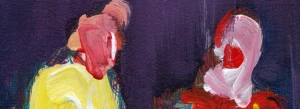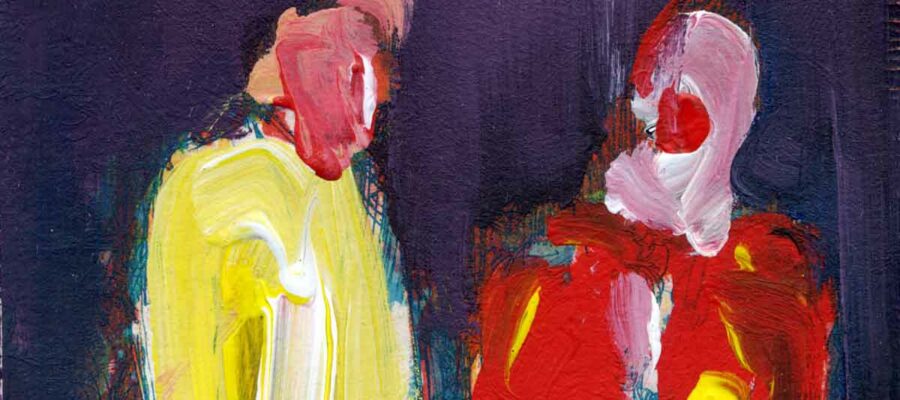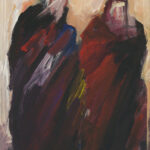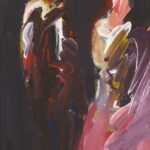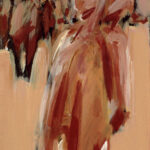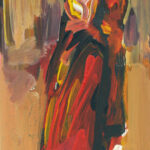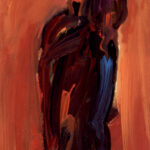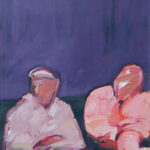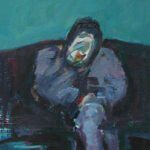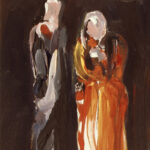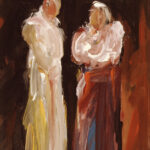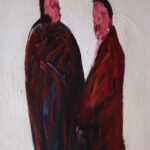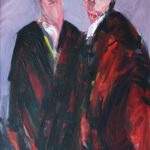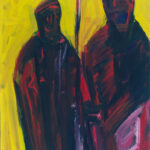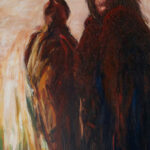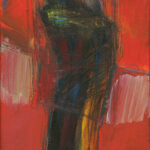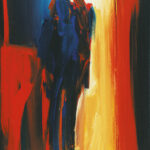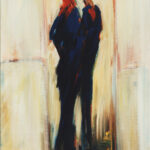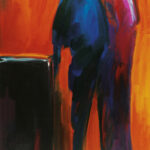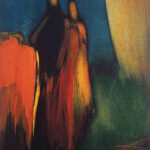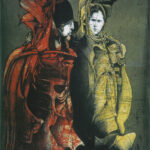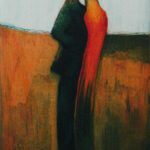Pairs Individually, a figure looks like a lonely column; in pairs, a dialogue is created through their relationship to each other, achieving a sort of energy within the picture. It could be a mirror of ourselves, of our society. There are an infinite number of dialogue situations. Man – anthropologically speaking – offers an inexhaustible source of artistic inspiration. A series of pictures was created in quick succession. The same basic concept runs through all the paintings, but no two are the same. They are diverse explorations of the same theme, in colour and form. Paintings in acrylic, overpainting discarded proofs of an etching to explore a new colour scheme, or on small canvasses, repeatedly taking the same starting point in series. They are always similar but they go their own way in their spontaneous and natural style of painting, always different. Some colour etchings, “Guardians”, “Warlords” or “Heroes” explore similar procedures.
Richard A. Cox
Couples In his print variations, Richard Cox depicts the double-figure portrait into a common image of human relationships – similar to his contemporaneous paintings and sculptural works. These relationships can also be understood as dependence on each other. His couple paintings often depict people who are closely bound to each other by inner, emotional ties. This can be the loving couple, but also the ruling couple. Power and powerlessness, will and arbitrariness, activity and passivity are further pairs of opposites that he processes in his kaleidoscope of human relationships.
The close connection between his printmaking, paintings and sculptural work is illustrated by two coloured prints in which the different working methods seem to merge. “Curtain Call” and “Fernweh” are images of couples whose figuration is reduced to a slender, overlong outline, just as he had worked on in some acrylic paintings a few years earlier. He also uses the overlong forms reduced to the outline in his figurative sculptures.
Martin Gesing, “Graphik, Malerei und Plastik”, in: Richard A. Cox. Monograph with catalogue of prints 1973-1997, Soest 1999.
